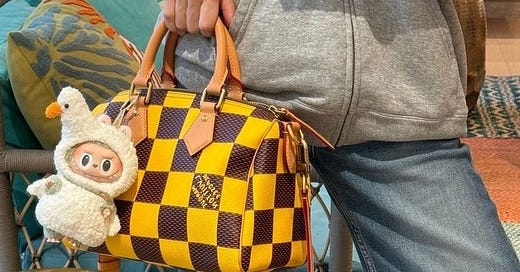Every May, I attend the Licensing Show in Las Vegas. Although Licensing was a bad word in Streetwear’s earlier years for their inflexible contracts and inorganic relationships, Licensing has become conflated with Collaborations in recent years. Our first big studio project was with Disney’s Peter Pan (The Lost Boys) in the 2000s and we got some backlash for it. Many in the core sneakerhead and skate community called us corporate sell-outs. Fast forward to this week: Crenshaw Skate Club collaborates with Coca-Cola and Neighborhood partners with Honda.
Any owner of IP (a familiar logo, a nostalgic band, an iconic cartoon character) can license their work out to a Licensee in exchange for a royalty fee. You can be a Hollywood studio, a coffee shop owner, an artist with a lovable mascot... Every deal is different, but Licensors (the ones who own the license) typically charge the Licensees between an 8-12% royalty to use their property. They often have an MG (Minimum Guarantee) in place as well. That means that Licensees are on the hook for a minimum amount of dollars, regardless if they make that money off of the arrangement.
Licensing has been around for generations, but modern commercial licensing exploded in the 20th Century with The Walt Disney Co. spearheading the charge. The first licensed product was a Mickey Mouse writing tablet, then the iconic Mickey Mouse watches, and throughout the 1930s, everything from dolls to toothpaste to wallpaper.
For the past decade, I’ve been seeing the landscape change at the annual Licensing Show. When we first started prowling the convention center, streetwear guys like us were rummaging for candy bars, classic cartoons, and ‘90s music artists to collab with. The more niche, the more personal — the more storytelling — the more meaningful. This was a golden era of Streetwear Licensing that wasn’t necessarily big on returns for the Licensor or Licensee, but was high in marketing volume and PR hits.
Eventually, Licensors determined that the marketing juice wasn’t worth the squeeze and they needed to see more of a return on their investments. So they upped their MGs and edited their Licensee lists down to the most successful partners who could deliver. Five years ago, those collaborators were riding the anime wave. You might remember this period in COVID history, where every mall retailer had Japanese animation banners in their window displays like Dragonball and Hunter Hunter. The same goes for horror movies, Deftones tees, and for some reason, Dennis Rodman.
This year, the Licensing Show skewed heavily into Asian kawaii plush, especially of the blind-box vinyl figure kind or bag-charm keychain variety. This isn’t a new trend in fashion and figurines, especially if you live in the East. But there has been a sudden swell in interest around this genre of collectibles over the past year, largely due to…







